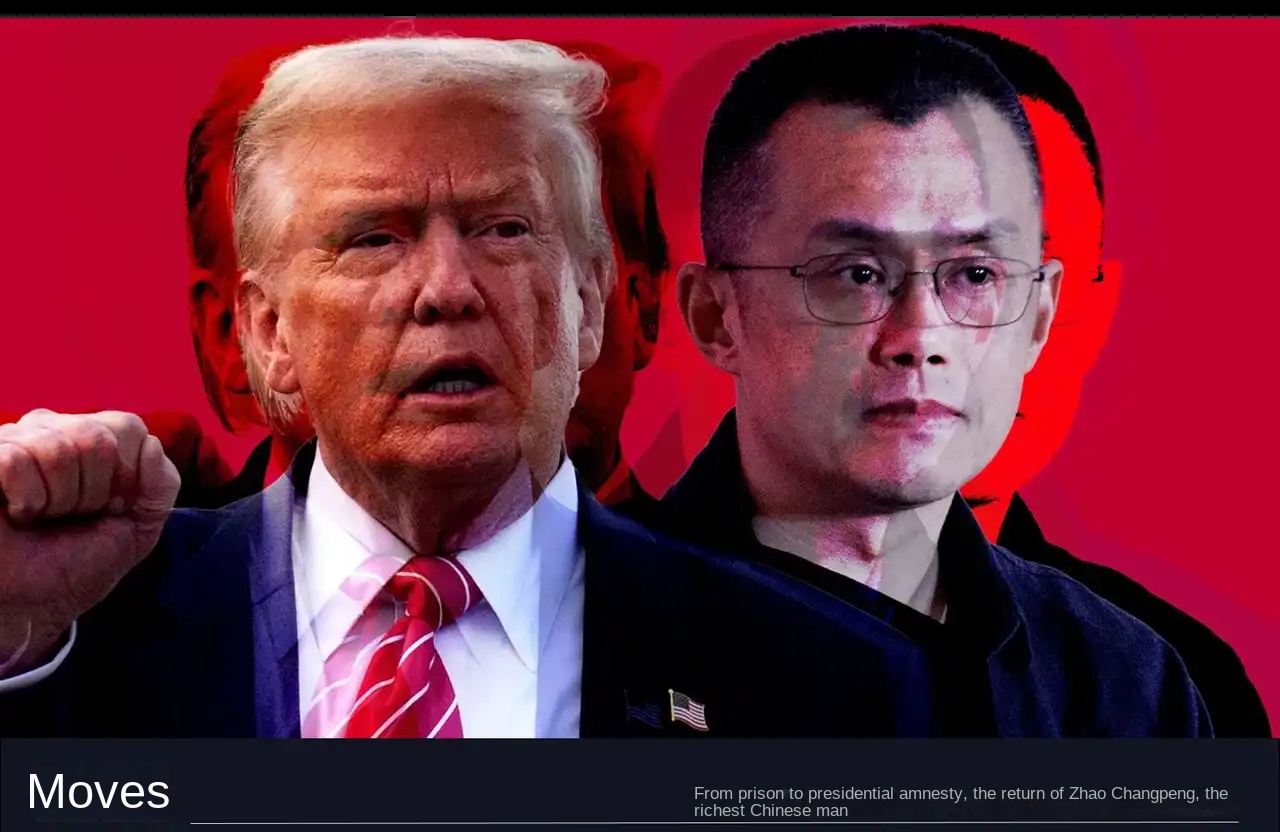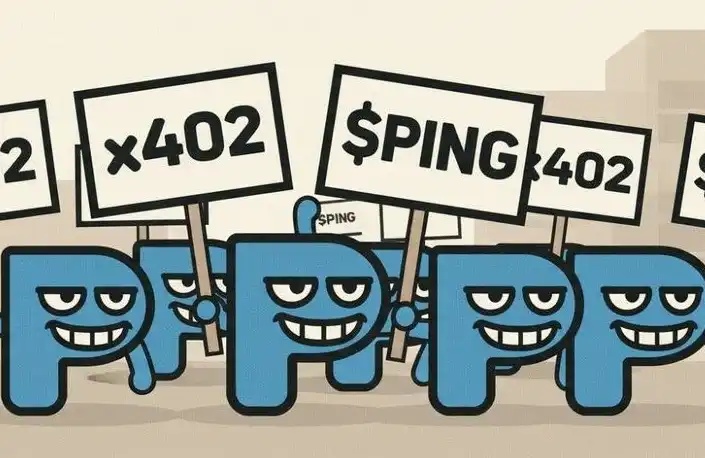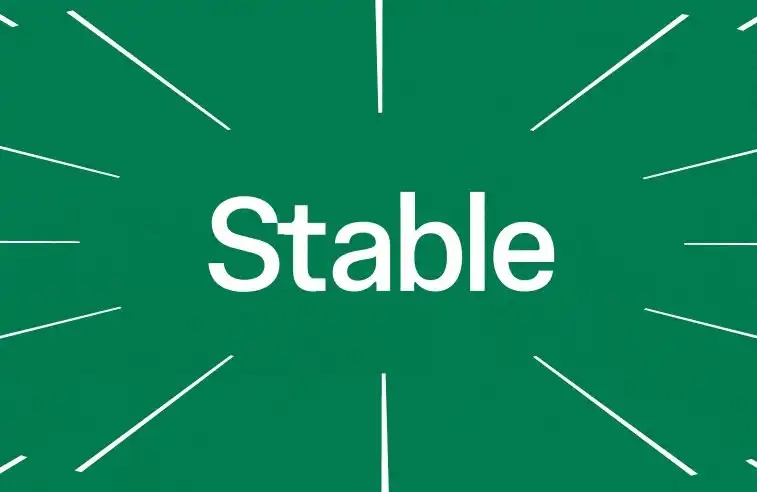Rhythm Interview with Stable CEO: With the Stablecoin Chain Race Accelerating, Where Does Stable Outperform Plasma?
Stablecoins are undergoing a narrative shift from being a trading medium in the crypto market to a core component of the global payment infrastructure.
By 2024, on-chain stablecoin transactions reached $27.6 trillion, surpassing the total transaction volume of Visa and Mastercard for the first time. By the first half of 2025, this number had risen to $8.9 trillion. In 2024, the use of stablecoins by enterprises in cross-border payments and supply chain settlements increased by about 25%.
It is against this backdrop that the stablecoin chain race witnessed explosive growth in 2025.
In October, Tempo, a payment public chain co-incubated by Stripe and Paradigm, successfully onboarded Dankrad Feist, an Ethereum core developer. Dankrad Feist, who has been deeply involved in Ethereum core research since 2018 and has made significant contributions to scaling technologies like Danksharding, joined the project. This move signifies that traditional payment giants are entering the stablecoin infrastructure field with unprecedented determination.
The "first stock of stablecoins," Circle, has also been making frequent moves. In the second quarter of 2025 financial report, Circle announced the company's latest initiative: a dedicated stablecoin Layer 1 public chain called Arc. Arc is designed for stablecoin finance and asset tokenization, EVM-compatible, focusing on global payments, foreign exchange, and capital markets, aiming to address issues such as transaction fee volatility, settlement uncertainty, and privacy deficiencies faced by existing public chains in enterprise applications.
In this competition, Plasma, supported by Tether, is undoubtedly the most dazzling star. With a hot pre-sale event and impressive market performance post TGE, Plasma quickly became the market focus. Within less than two weeks of the mainnet launch, its TVL exceeded $6.3 billion, surpassing several base layer chains and ranking sixth in TVL. Users participating in the pre-sale were allocated XPL tokens worth at least around $8,390. From token performance to ecosystem heat, Plasma has almost taken a dominant position in all discussions about the "stablecoin chain."
As another L1 stablecoin project deeply integrated with Tether, Stable also focuses on payment infrastructure but maintains a relatively low-key stance amid the market buzz. At 9:10 am Beijing time on October 24th, Stable announced the start of its pre-sale event, with the deposit limit being declared full within 2 minutes.

While all eyes are on Plasma, what exactly is Stable doing? What is its division of labor logic with Plasma? Why, despite both being backed by Tether, did the two chains choose such different market strategies? In the competition for stablecoin payment infrastructure, how will Stable break through?
Recently, BlockBeats conducted an in-depth interview with Stable CEO Brian Mehler, discussing their technical architecture choices, ecosystem partnership strategy, collaboration with Tether, global regulatory trends, and the practical use case of stablecoins in enterprise settings, aiming to reveal the true picture of this "underestimated" stablecoin chain. Below is the original conversation:
Competition with Plasma and Other Stablecoin Chains
BlockBeats: Before we begin, could you please give us a brief introduction about yourself? Why did you decide to join the Stable team?
Brian Mehler: My name is Brian Mehler, and I am the CEO of Stable. I come from a traditional financial background. In 2018, I had the opportunity to join the Block.One team and was involved in the launch of the EOS Fund. This was a $1 billion ecosystem fund aimed at supporting the development of the EOS blockchain ecosystem. Since then, I have managed multiple venture capital funds and provided asset management services for individual investors.
This year, I was invited to join the Stable team. The founding team of Stable is a group of very experienced entrepreneurs who have worked on many projects before. I have been fortunate to collaborate with them in various roles in the past. They were very clear that the team needed an "executor," someone who could truly bring the vision of "traditional finance on-chain" to fruition. My experience in venture capital and corporate operations happened to complement theirs perfectly. So when they invited me to join, I felt it was a very natural decision.
BlockBeats: Let's first talk about the "free transfer" feature that has become popular among stablecoin public chains. Stable offers a gas-free USDT transfer feature, while also using gasUSDT as its native Gas token. Is this free transfer feature mainly a response to competition from Plasma and similar products?
Brian Mehler: The introduction of a gas-free peer-to-peer transfer feature by Stable is actually part of our core mission. We hope to truly drive stablecoins into the mainstream through this feature. This is not only an experiential improvement for individual users but also a significant aid for enterprises in fund management and payment processing.
In the past, the price volatility of Gas tokens has been a pain point for users in on-chain transactions. We aim to make the Stable chain and our stablecoin more suitable for business scenarios and more easily accepted by ordinary users by eliminating this barrier. To this end, we are actively seeking partners to work together to advance this goal.
98.7% of the gas fees generated by Stablecoin trades contribute to Tron Network's total gas fees.
Source: token terminal
We are not passively responding to market competition, but actively proposing solutions. For example, we have chosen USDT as the native Gas token on-chain, which is a significant differentiating advantage and can bring tangible value to users.
We are building a Stable Chain payment network that will redefine the way funds flow, addressing various existing obstacles. Currently, many obstacles stem from the volatility of Gas tokens. In the future, these issues will no longer exist. For instance, if you want to send a small amount of money to family or express gratitude through cross-border remittance, you no longer have to worry, "Do I have to pay an additional 10% fee?" We are working to eliminate these concerns, hoping to make these payment actions as simple as sending a message.
Therefore, I believe that this feature is not only suitable for ordinary consumers but also very suitable for the needs of enterprises in cross-border payments and fund transfers.
Furthermore, from the perspective of the chain's operation, although USDT is the native Gas token on the Stable Chain, it is actually priced as "gasUSDT." This design allows us to build a unified system where transactions and fees are settled in USDT and implemented through an account abstraction layer. This means that users do not have to worry about different types of balances when using the system; they only need to see a unified number or transaction amount.
This mechanism brings a "Gas-Free" user experience. For users, the underlying technical details are completely shielded, and no manual conversion or operation is required. Therefore, when conducting stablecoin peer-to-peer transfers on the Stable Chain, the price remains consistent, the process is efficient, and seamless.
BlockBeats: Recently, after the native token XPL of Plasma was launched, the market response was enthusiastic, and the valuation quickly soared to tens of billions of dollars, with early investors earning over 220 times. Meanwhile, the Stable team has remained silent. Some say you lost to Plasma in Go-To-Market strategy. How do you view this perspective?
Brian Mehler: I think stablecoins are a very hot track at the moment and it doesn't seem to cool down in the short term. I think we all saw the news last week, stablecoin asset management is reaching new milestones. We are very excited about this growth trend, not only because there is the push of the Talent Act in the United States, but also globally, many countries are actively drafting new regulations and regulatory frameworks to support the development of stablecoins.
We are excited to be part of this, and we are confident about the upcoming product launch. We have strong partners and a team that has been driving the project forward since day one, continuously expanding. I am very excited about it all.
Furthermore, you mentioned the different participants in the market earlier. I would like to add a point that may not have been noticed by many: Stable is a Layer 1 protocol, which means that we can provide users with higher speed and transaction confirmation efficiency from the outset, without relying on Layer 2 solutions. We understand that there are various projects in the market, and we welcome their participation. As the tide rises, the entire ecosystem will benefit.
So, we are looking forward to seeing the development and expansion of the stablecoin chain market. We hope to become, and are working hard to become, a key player in this race, whether it is next week or in the coming years.
BlockBeats: Many people are curious about the relationship between Stable, Plasma, and Tether. Could you also talk about the relationship between Stable and Tether? And the positioning and differences between Stable and Plasma?
Brian Mehler: Stable has had support from Tether CEO Paolo from day one; he is one of our advisors. He has provided a lot of help in the design process of our product, ensuring that we are building a stable foundation that users truly need. We are also continuing many of Tether's concepts, such as making funds more easily accessible, circulating faster, and achieving zero-fee transfers.
Stable is focused on building a high-performance payment infrastructure. The Stable chain will use USDT as the native Gas token, which is a key feature of ours. I would like to say that the products launched by Tether, especially USDT, are a core part of our Layer 1 build. Whether it's USDT or USDT0, or future collaborations with other projects, we are very focused on USDT and hope that it will drive the global market expansion, which is also Stable's goal.
At the KBW Summit, USAT CEO Bo Hines (center) discusses the institutionalized future of stablecoins with Stable CEO Brian Mehler (right)
Image Source: Stable Official Website
BlockBeats: Currently, Plasma seems to have some "first-mover advantage," establishing partnerships with mainstream DeFi projects such as Aave and Ethena after its mainnet launch, rapidly growing TVL to over 20 billion dollars. Does Stable also have confirmed ecosystem partnerships from financial institutions or DeFi protocols?
Brian Mehler: I don't have any particularly major news to announce today, but I can share some recent developments we have disclosed.
One important piece of news is an investment from PayPal Ventures. PayPal is a global fintech giant that has long been deeply involved in the traditional financial sector, with millions of users. They have made a strategic investment in Stable. As part of this collaboration, they are introducing their stablecoin, PYUSD, to the Stable chain. This not only expands the distribution channels for PYUSD but also enhances its utility and liquidity.
I think this is a great partnership model, demonstrating that we are not only working with investors but also driving ecosystem development alongside strategic partners. We are also looking forward to announcing more key content in the next few days, and I will contact you first-hand at that time.
BlockBeats: PayPal Ventures has been active recently in the stablecoin and AI-powered payment agent areas. How do you view their layout in this direction?
Brian Mehler: I cannot speak on behalf of PayPal or PayPal Ventures, but I can share some of my personal observations and understanding. Their core business is transferring funds between people, and for the past few decades, they have relied on traditional payment infrastructure, dating back to the 1970s. This system has many frictions, such as transaction delays, poor user experience, and other issues.
More importantly, they do not have complete control over the ecosystem they operate in and are constantly dealing with user feedback on costs, speed, experience, and other aspects. So, if they can find a solution, such as integrating stablecoins or other new mechanisms, to enhance the customer-facing product experience, I think this is a direction they are very willing to explore and invest in. Because this can not only optimize user experience but also enhance the efficiency and flexibility of the entire payment ecosystem.
Stable's Technical Philosophy and Strategic Positioning
BlockBeats: Next, let's discuss Stable's strategic positioning. Stable positions itself as a high-performance Layer 1 specifically designed for institutional settlement and B2B cross-border payments. Given that the majority of stablecoin transaction volume currently comes from DeFi and retail trading, why did you choose to prioritize focusing on the slower-paced, more complex institutional market?
Brian Mehler: In fact, it is quite the opposite, and this is a conscious choice we made in our product design and market strategy from the beginning.
At the project's inception, we decided to focus on the institutional market because we clearly saw an opportunity: a chance to fundamentally change the way global payments are processed. In building Stable, we realized that if we could create a high-performance Layer 1 blockchain specifically tailored for institutional settlement and supporting cross-border B2B payments, it would truly revolutionize the future payment infrastructure. It is not only faster and more secure but also scalable to meet the real needs of corporate clients.
B2B The monthly settlement volume of Stablecoins has grown from less than $100 million in early 2023 to over $3 billion in early 2025.
Image Source: Stable Official Medium
Of course, we also pay close attention to the user experience on the individual and consumer side. However, we wanted to ensure from the outset that Stable's design has the "currency-grade" operational capability, meaning it must be able to support large-scale usage.
Our goal is to make stablecoins an indispensable part of everyone's daily financial life, including achieving real-time settlement and a highly predictable financial operational experience.
BlockBeats: Earlier, you mentioned that Stable's underlying design aims to address various pain points in the payment system. For the financial institutions you serve, what is the most critical guarantee? Is it ultra-low latency, or ensuring predictable transaction costs under any network load?
Brian Mehler: I believe that for financial institutions, the most critical technical guarantee is to provide an inclusive and highly predictable solution that ensures cost control and final transaction confirmation. These are actually pain points we identified early in the project, but have not been well resolved for a long time.
Regardless of the network conditions, we hope to address these issues through Stable. Many enterprises often encounter situations where gas fees for stablecoin transactions fluctuate dramatically, making transaction costs unpredictable. This is a significant challenge for CFOs because they find it difficult to accurately determine which costs can be passed on to customers and which need to be borne internally.
At the same time, exchange rate fluctuations between different currencies can also bring additional uncertainty. Coupled with slow settlement speeds, these factors combined actually turn the use of stablecoins into a kind of "trap" in certain scenarios. Therefore, when designing Stable, we systematically optimized for these challenges. We chose to use USDT as the native Gas token, fundamentally eliminating the volatility of Gas fees, allowing enterprises to clearly know the cost and delivery fees of the entire process before initiating a transaction.
In addition, we have also achieved sub-second transaction finality. Compared to the uncertainty in confirmation times of traditional networks, Stable provides a stable and fast settlement experience. This not only solves the issue of cost control but also significantly improves transaction efficiency. We believe that this will greatly enhance enterprise operational efficiency and expand the application space of stablecoins in more real-world scenarios in the future.
BlockBeats: One very special feature of Stable is the "Guaranteed Blockspace," which reserves a fixed portion of network capacity for enterprise clients to ensure their transactions can be prioritized for processing. What are the primary business application scenarios of this mechanism?
Brian Mehler: I'm glad you brought up this topic. "Guaranteed Blockspace" is one of our most differentiated core features on the enterprise side.
As we mentioned earlier, many blockchain networks currently experience significant fluctuations in transaction fees and confirmation times. For example, if you were to initiate a $100,000 USDT transfer today, you might only need to pay a $2 to $3 fee. However, later in the day, with the listing of different markets and increased network congestion, this fee could skyrocket to $20, $30, or even higher.
For enterprises, this kind of uncertainty can greatly impact their business plans. Sometimes they may profit, while other times they may suffer losses due to cost spikes. I believe no enterprise is willing to face such risks. Through "Guaranteed Blockspace," we have carved out a "fast lane" for enterprises in the Stable network. Companies can ensure their transactions are prioritized to be included in the next block through a subscription or pay-per-use model.
These fees are also paid in USDT, allowing enterprises to clearly know the cost of each transaction before proceeding. Through a subscription model, they can even estimate the costs for the entire month in advance, no longer needing to worry about the uncertainty brought by Gas price fluctuations or perform additional hedging operations. The cost of the entire transaction process is locked in and predictable.
BlockBeats: In extreme market volatility and network congestion scenarios (such as during the recent market crash, where many public chains like Ethereum, Solana, etc., experienced skyrocketing Gas fees, network congestion, or transaction failures), how does Stable ensure that critical enterprise transactions remain unaffected?
Brian Mehler: The situation you mentioned can actually be divided into two aspects, one is network congestion, and the other is token price volatility.
Regarding the issue of token volatility, we can solve it very well. Because we use USDT as the native Gas token, which is a well-known stablecoin, with a stable price that does not fluctuate dramatically like other crypto assets, eliminating one of the uncertainty factors.
As for the issue of network congestion, while general-purpose Layer 1 blockchains are powerful, they are not specifically designed for payment scenarios. We have been focused on building a dedicated network from the start, aiming to truly enable scalable payment transactions.
Therefore, on Stable, you will not encounter high congestion as seen on other chains. Because our focus is on the circulation of stablecoins, there won't be a large number of gaming, meme coins, and other non-payment applications occupying network resources.
BlockBeats: Plasma's security relies on the Bitcoin network and can be understood as Bitcoin's sidechain or Layer 2. In contrast, Stable utilizes its own POS Layer 1 and Stable BFT security framework. How do you view the differences between these two architectures? From the perspective of institutions that highly value security, how can an independent BFT mechanism be comparable to the mature security model of the Bitcoin network?
Brian Mehler: Bitcoin's security is indeed very mature, but the Stable BFT you mentioned is a mechanism we specifically designed for the stablecoin transaction scenario, rather than applying a system originally designed for a different purpose. We have architected around this theme from the outset.
Stable BFT can achieve rapid finality and high throughput, which are highly valued features for institutional users. While ensuring security, we also prioritize performance to ensure it is truly suitable for the market we target. Specifically, Stable BFT can provide sub-second finality, allowing institutions to immediately obtain certainty after a transaction is completed, without having to wait 15 to 20 minutes or even longer as on other networks.
Moreover, it can maintain stable performance under high loads, meeting the reliability standards required for financial-grade settlements. This is precisely the goal we are working hard to achieve.
BlockBeats: For example, you have already announced and implemented OPE (Optimistic Parallel Execution) and DAG consensus mechanisms, demonstrating Stable's ongoing technological upgrades. Could you share how Stable's development roadmap is helping drive B2B payments or the entire ecosystem's growth?
Brian Mehler: Absolutely. I think these are two key technological upgrades that we are very much looking forward to, and we plan to officially release them in the early version next year. These two upgrades are ones we have been actively driving towards, aiming to ensure that the Stable chain can compete in performance with other high-performance Layer 1 blockchains.
I believe these technologies are crucial for building an architecture that is future-proof. The current B2B fund flows not only require transaction finality predictability but also demand efficiency in global payment execution. We must have the scalability capabilities that traditional financial market participants possess. OPE allows us to process independent transactions in parallel, significantly increasing network throughput and reducing latency. The upcoming DAG system is designed to accelerate transaction confirmation speeds, further enhancing efficiency without compromising network reliability.
OPE Operation Mechanism
Image Source: Stable Official Documentation
These two mechanisms combined will ensure that the Stable chain has good scalability and will drive widespread adoption among institutional users. Through the implementation of these technologies, we are preparing for the upcoming market growth demand while avoiding the scalability bottlenecks that traditional financial systems face due to complex architectures.
BlockBeats: Assuming that in the future, Stable successfully captures the B2B and institutional settlement market, while Plasma dominates the broader retail market, do you think relying solely on B2B business revenue can sustain the L1 infrastructure and validator incentives in the long run?
Brian Mehler: We believe that capturing high-margin B2B and institutional settlement traffic can indeed provide the necessary support for the Layer 1 we have built. Our focus is on continuously creating outstanding value for these customers, ensuring the stable operation of the infrastructure, and maintaining the sustainability of the validator incentive mechanism.
Additionally, as stablecoin use cases continue to expand, more exciting new opportunities will emerge in the market. This is not only a deepening expansion of our existing market but also includes the emerging areas we are actively entering. Whether on the institutional side or the retail side, we are strategically positioned in both directions.
As the platform develops, we will launch more integrated solutions, collaborative projects, and cross-domain cooperation. Ultimately, our users will truly benefit in multiple scenarios. We certainly will not confine Stable to a single audience or vertical. We believe that this network has the potential to cover a broader market.
BlockBeats: Currently, the competition among stablecoin chains is intensifying. Circle has launched Arc, Stripe has launched Tempo, and Stable and Plasma are seen as Tether's "internal horses." Can you discuss how Stable can attract more use cases to migrate to Stable for settlement?
Brian Mehler: This is a great question. Stable is actively advancing partnerships in multiple areas, including commodity trading and financial services. Many third-party transactions being brought on-chain are a key focus for our business development team. Particularly in emerging markets where Tether has already established a strong presence, they have completely transformed the local banking system and fund flows, which we highly value.
We have established some partnerships and will be announcing more in the coming weeks. These partnerships will help us quickly onboard a large influx of funds onto the Stable chain. These emerging market corridors are where USDT has already been solving real-world problems, and we are simply riding that wave to meet existing market demand.
We are very focused on the regions where Tether has brought about change and are looking forward to further amplifying this impact to enable freer and more efficient fund flows.
BlockBeats: Another competitor you face is the Tron network, where many USDT whales and users currently heavily rely on it. Through which specific features or incentive measures will Stable attract these users to migrate from the Tron network to Stable?
Brian Mehler: I believe some of the features we offer, such as the previously mentioned "block space guarantee" and "sub-second finality," are crucial for enterprises. These are all elements highly valued by enterprises seeking efficiency and reliability. Stable's infrastructure is specifically designed for high-volume transactions, and the costs are also very low. Therefore, for institutional users currently operating on other chains, we are a very attractive alternative.
They may find that continuing to use their existing infrastructure becomes increasingly unfeasible, while Stable provides a faster, cheaper, and more secure option. I would say that funds always flow in the path of least resistance. If we can eliminate these friction points, we will naturally see funds starting to flow our way.
The Regulatory Future of Stablecoins
BlockBeats: Next, let's discuss the regulatory issue. Stable is developing a "Confidential Transfer" mechanism to hide transaction amounts while retaining addresses to meet compliance requirements. How important do you think this feature is in winning over regulated entity clients?
Brian Mehler: We have put a lot of effort into this issue, not only deeply listening to the voices of enterprise clients to understand the real needs of the institutional market, but also paying great attention to compliance issues in different jurisdictions. This is a very vast and complex system, and we must become experts in this area.
Currently, we are exploring various innovative ways to achieve the "Confidential Transfer" mechanism, aiming to attract institutional clients with high requirements for privacy protection while being subject to regulatory constraints. We hope that they can enjoy the benefits of privacy protection when dealing with sensitive data while ensuring compliance. This is a topic they are very concerned about. We are progressing in sync from both regulatory requirements and customer needs, and once fully prepared, we will also disclose more details to the public.
BlockBeats: Will the rules of this feature vary in different countries or regions?
Brian Mehler: We currently do not have specific information that can be disclosed to the public, and this work is still in progress. But it can be stated with certainty that we will ensure that the entire system is designed with compliance and structural integrity. Because our goal is to build a payment infrastructure that can support global-scale expansion, compliance is an essential part of it.
BlockBeats: Stable's goal is to achieve full decentralization of the validator set. However, we also know that institutions tend to prefer working with controlled, known validators to meet compliance and reliability requirements. How will Stable balance between the "open participation" concept in the crypto world and institutions' need for a "permissioned validation environment"?
Brian Mehler: We understand very well that having reliable validators is crucial for institutional clients. Our goal is to create an environment that encourages permissionless participation in the network while ensuring that on-chain validators meet the necessary compliance and performance standards. The key is to find the right balance so that the network can remain open while providing institutional users with the stability and trust they need.
BlockBeats: Do you think the main target market for future stablecoins is the individual user To C market or the enterprise and institution To B market?
Brian Mehler: I believe it is a mix of both. From a market performance perspective, we can already clearly see this trend. The total deposits and transaction volume of stablecoins are continuously growing. The retail side has indeed contributed a large number of transaction counts, while the institutional side holds a larger capital volume.
This is very similar to traditional banking business in traditional finance, and on-chain account management is also showing a similar structure. The combination of both helps to balance the overall transaction frequency and transaction scale. This dual participation model is very beneficial for the development of the entire ecosystem.
BlockBeats: What do you think will be the future application scenarios of stablecoins in institutions? Enterprises already have very mature traditional financial systems to handle scenarios such as fund transfers and payroll. Why would they turn to stablecoins?
Brian Mehler: If you were to ask any CFO or corporate leader of a multinational corporation, they would definitely tell you about the various pain points in the current financial network, such as unexpected fees or transaction delays.
For example, using the SWIFT network for cross-border transactions is not easy, as many people struggle to use it smoothly. Sometimes banks do not support it, or you need to pay a $100 fee to send out $50. With the acceleration of global information flow, payment systems must keep up. The current settlement process may be T+2, T+3, or even T+4, which is very disadvantageous for corporate operations.
For instance, in the case of payroll, if the end of the month falls on a holiday followed by a Monday, when should the CFO prepare funds to pay the global workforce? It might need to be prepared the Wednesday of the previous week now. This means that funds have to leave the account well in advance. Using stablecoins, enterprises can be closer to the actual payment time, even completing payment on the holiday itself.
Consumers and employees live year-round, 24/7, and should not only receive their wages on bank business days. Global holidays vary, and many delays are unpredictable because no one can remember all the countries' calendars. So, why can't stablecoins achieve instant, global, frictionless payments?
BlockBeats: How do you view the impact of the future regulatory environment in the United States, the European Union, and other regions on the stablecoin competitive landscape?
Brian Mehler: This is something I have been looking forward to very much, seeing regulation gradually take shape is exciting. We have been closely following regulatory developments globally, and I myself attended the launch event held in New York.
What reassures me is that many of those involved are old friends I have known in the industry over the past decade, and there are also many people from the traditional banking system— I remember in 2018, they were not even willing to discuss any topic related to stablecoins. And now, individuals, companies, and even large institutions from different backgrounds are actively embracing blockchain technology.
The "Genius Bill" provides institutions, especially large banks, with the necessary regulatory framework to start accepting and adopting this new technology. They have realized the effectiveness of this technology, and that is no longer the question.
Banks and financial institutions are well aware that blockchain can address many of the longstanding pain points they have faced, with the main obstacle in the past being the lack of a clear regulatory framework. Without clear legal coverage, they could not fully embrace this technology. The enactment of the "Genius Bill" has completely changed this situation. For example, the launch of USAT is a good example.
This is truly exciting. I remember that shortly after the Stable project was officially announced, we held a large offline event in New York, and jointly sponsored the Korea Blockchain Week. I was on stage at that time, next to the CEO of USAT, and we discussed how regulation is reshaping the market landscape. This work was mainly aimed at eliminating costs and frictions in cross-border transactions, making payments truly flow smoothly. Today, TikTok can allow content to spread freely, but funds still struggle to flow efficiently.
The faster and smoother the fund flow, the more active economic and business activities will be. We are looking forward to this. Whether in the United States, in other Asian markets, or even in the EU you mentioned, all these regulatory frameworks are helping to build a brand-new system. Not only companies like Stable but even traditional financial institutions are excitedly embracing it.
BlockBeats: Is Stable considering entering the stablecoin market in Hong Kong?
Brian Mehler: Stable's positioning does not include issuing stablecoins. Therefore, many regulatory requirements are aimed at stablecoin issuers, which is obviously something that those companies and teams need to pay special attention to. As a Layer 1 permissionless system, we are not involved in these regulatory dialogues because we neither custody funds nor own any assets. So, this is indeed an issue that our partners and related companies will need to carefully evaluate in the coming weeks.
BlockBeats: One last question, if we position Stable within the ecosystem of the traditional financial system, do you see Stable aiming to be the "Visa" of the future payment world or a network of banks?
Brian Mehler: I think we do touch on multiple levels indeed. Our vision is to become the "rails" for global payments, that's our mission - to connect A to B and make the movement of funds faster and smoother. So I would say we are bearers of network effects, much like the core payment networks in the traditional financial system.
Of course, there are many excellent projects building the stablecoin ecosystem, and we aim to be the "home" to all stablecoins. We are truly a network effects platform while actively seeking more opportunities for partnerships and collaborations, driving the entire ecosystem to scale to unprecedented levels.
Welcome to join the official BlockBeats community:
Telegram Subscription Group: https://t.me/theblockbeats
Telegram Discussion Group: https://t.me/BlockBeats_App
Official Twitter Account: https://twitter.com/BlockBeatsAsia


 Forum
Forum Finance
Finance
 Specials
Specials
 On-chain Eco
On-chain Eco
 Entry
Entry
 Podcasts
Podcasts
 Activities
Activities
 OPRR
OPRR











